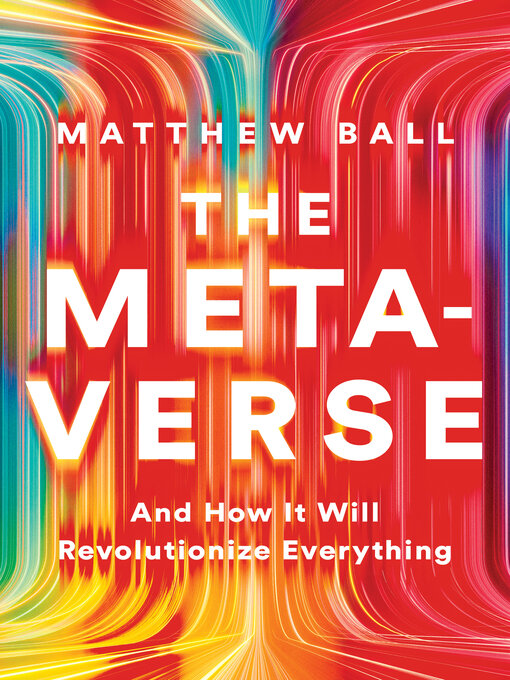The Metaverse

THE TERM “METAVERSE” WAS COINED BY AUTHOR Neal Stephenson in his 1992 novel Snow Crash.
The idea of the Metaverse is also inseparable from the ideas of the Memex, but where Bush imagined an infinite series of documents linked together via words, Stephenson and others conceived infinitely interconnected worlds.
By the end of 2021, Adopt Me!’s virtual world had been visited more than 30 billion times—more than fifteen times the average number of global tourism visits in 2019
In 2020, hip-hop star (and Kardashian family member) Travis Scott hosted a concert that was attended live by 28 million players, with millions more watching live on social media.
“We’ve had metaverse aspirations for a very, very long time . . . but only in recent years have a critical mass of working pieces started coming together rapidly.”
Microsoft’s CEO Satya Nadella has described the Metaverse as a platform that turns the “entire world into an app canvas” 1 which could be augmented by cloud software and machine learning.
Mark Zuckerberg’s articulation focused on immersive virtual reality #x2021;‡ as well as social experiences that connect individuals who live far apart.
Epic’s vision of the Metaverse, meanwhile, as “an expansive, digitized communal space where users can mingle freely with brands and one another in ways that permit self-expression and spark joy
The only way to prepare for what is coming is to focus on the specific technologies and features that together comprise it. Put another way, we have to define the Metaverse.
Metaverse: “A massively scaled and interoperable network of real-time rendered 3D virtual worlds that can be experienced synchronously and persistently by an effectively unlimited number of users with an individual sense of presence, and with continuity of data, such as identity, history, entitlements, objects, communications, and payments.”
Tags: favorite
In recent years, the biggest uptick in virtual world creation has been via worlds which have no “gameplay” whatsoever.
3D is necessary not just because it signals something new. Metaverse theorists argue that 3D environments are required in order to make possible the transition of human culture and labor from the physical world to the digital one.
humans seek out digital models that most closely represent the world as they experience it—richly detailed, mixing audio and video, and with a sense of being “live” rather than static or outdated
no part of the Metaverse requires an immersive virtual reality or VR headset. These may eventually be the most popular way to experience the Metaverse, but immersive virtual reality is just one way to access it.
Monsters University. Even when using an industrial grade computing processor, it would have taken an average of 29 hours for each of the film’s 120,000-plus frames to be rendered
Central to most visions of the Metaverse is the user’s ability to take her virtual “content,” such as an avatar or a backpack, from one virtual world to another, where it might also be changed, sold, or remixed with other goods.
existing virtual worlds have no clear way to find and recognize one another, nor do they have a common language in which they can coimmunicate
The best example of the computation-persistence interplay comes via the game EVE Online
synchronous online experiences are perhaps the greatest constraint facing the Metaverse today—and the one that is hardest to solve
many consider the Metaverse to be reliant upon innovations in devices, such as VR headsets, game engines (such as Unreal), or platforms like Roblox, networking capabilities will define—and constrain—much of what’s possible, when, and for whom.